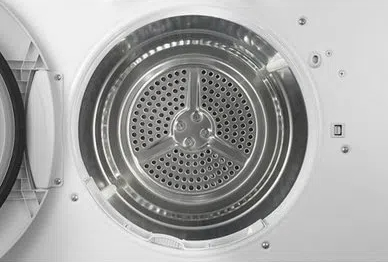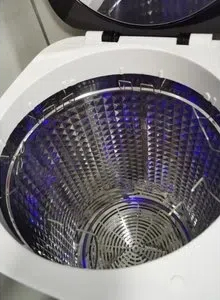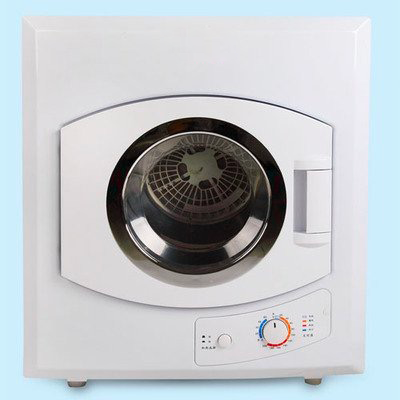
Content Menu
● Introduction
● Understanding Heat Pump Dryer Technology
● Cold Weather Performance Factors
>> Temperature Impact
>> Moisture Management
● Optimizing Cold Weather Performance
>> Installation Considerations
>> Maintenance Tips for Cold Weather
● Energy Efficiency in Cold Conditions
● Best Practices for Winter Use
● Advanced Features for Cold Weather Operation
● Environmental Benefits
● Conclusion
● Common Questions and Answers
>> Q1: What is the minimum operating temperature for a heat pump dryer?
>> Q2: Will drying times increase significantly in cold weather?
>> Q3: How can I improve my heat pump dryer's efficiency in winter?
>> Q4: Do heat pump dryers use more energy in cold weather?
>> Q5: Should I install my heat pump dryer in a heated space?
Introduction
Heat pump dryers have revolutionized the way we dry clothes, offering exceptional energy efficiency and gentle fabric care. However, many potential buyers wonder about their performance in cold weather conditions. This comprehensive guide will explore how these innovative appliances function in lower temperatures and what you can expect from their performance during the winter months.
Understanding Heat Pump Dryer Technology
Heat pump dryers operate using a sophisticated system that's fundamentally different from conventional dryers. Instead of simply heating air and venting it outside, these machines use a closed-loop system that continuously recycles and dehumidifies the air inside the dryer. This process involves:
- An evaporator that removes moisture from the air
- A condenser that reheats the air
- A heat pump system that efficiently transfers heat
- A water collection system for condensation

Cold Weather Performance Factors
When operating in cold conditions, several factors influence heat pump dryer performance:
Temperature Impact
- Ambient room temperature affects drying time
- Initial warm-up period may be longer in cold conditions
- Optimal operating temperature range considerations
- Impact on energy efficiency in various conditions
Moisture Management
- Condensation handling in cold environments
- Humidity levels and their effect on drying
- Water drainage systems in winter conditions
- Frost prevention mechanisms
Optimizing Cold Weather Performance
Installation Considerations
- Proper ventilation requirements
- Ideal room placement
- Insulation recommendations
- Distance from external walls
Maintenance Tips for Cold Weather
- Regular filter cleaning
- Condensation system checks
- Heat exchanger maintenance
- Temperature sensor verification

Energy Efficiency in Cold Conditions
Despite the challenges of cold weather, heat pump dryers maintain significant energy advantages:
- Reduced energy consumption compared to conventional dryers
- Heat recycling benefits
- Temperature adaptation capabilities
- Long-term cost savings
Best Practices for Winter Use
To maximize performance during cold weather:
- Allow longer drying times when necessary
- Avoid overloading the drum
- Keep the room temperature moderate
- Ensure proper maintenance
- Monitor moisture levels
Advanced Features for Cold Weather Operation
Modern heat pump dryers include various features to enhance cold weather performance:
- Smart temperature sensing
- Automatic moisture detection
- Frost protection systems
- Variable heat settings
- Energy optimization modes
Environmental Benefits
Even in cold weather, heat pump dryers offer significant environmental advantages:
- Reduced carbon footprint
- Lower energy consumption
- Sustainable operation
- Minimal heat waste
- Water conservation
Conclusion
Heat pump dryers can indeed work effectively in cold weather, though with some considerations for optimal performance. By understanding their operation and following proper maintenance and usage guidelines, you can ensure efficient drying performance year-round while maintaining the energy-saving benefits these appliances offer.

Common Questions and Answers
Q1: What is the minimum operating temperature for a heat pump dryer?
A1: Most heat pump dryers can operate effectively in room temperatures between 5°C (41°F) and 35°C (95°F). However, optimal performance is typically achieved between 15°C (59°F) and 25°C (77°F).
Q2: Will drying times increase significantly in cold weather?
A2: Yes, drying times may increase by 10-30% in cold conditions, depending on the ambient temperature and the specific model of the dryer.
Q3: How can I improve my heat pump dryer's efficiency in winter?
A3: Keep the room temperature above 10°C (50°F), ensure proper ventilation, clean filters regularly, and avoid overloading the dryer to maintain optimal efficiency.
Q4: Do heat pump dryers use more energy in cold weather?
A4: While they may require slightly more energy in cold conditions, heat pump dryers still maintain significantly better efficiency than conventional dryers.
Q5: Should I install my heat pump dryer in a heated space?
A5: Yes, installing the dryer in a heated space is recommended for optimal performance, especially during cold weather months.












